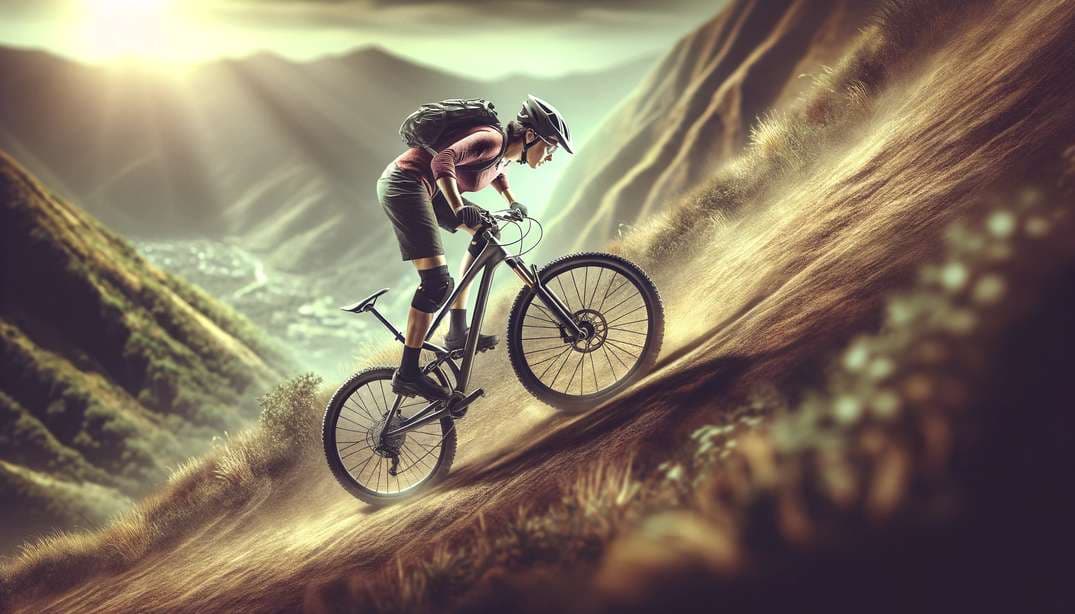
Mastering Mountain Bike Handlebar Setup for Optimal Control
Key Takeaways from "Mountain Bike Handlebar Setup for Optimal Control"
| Takeaway | Description |
|---|---|
| Handlebar Width | Importance of width for control and comfort. |
| Handlebar Height | Impact of height on riding posture and efficiency. |
| Handlebar Angle | Optimizing angle for better control on technical trails. |
| Material and Weight | Choosing the right material for performance and endurance. |
| Grip and Ergonomics | Importance of grip style for comfort and control. |
Mastering Mountain Bike Handlebar Setup for Optimal Control
Mountain biking is a thrilling and physically demanding sport that requires precision, control, and comfort. One crucial aspect of achieving this is through the optimal setup of mountain bike handlebars. This article delves into the key factors to consider for an ideal handlebar setup, ensuring you have the best possible control and comfort on your rides.
Understanding Handlebar Width
The width of your handlebar significantly influences your bike's handling and your comfort. A wider handlebar offers more control, especially on technical trails and during aggressive riding. It allows for a broader stance, which can improve balance and stability. However, too wide a handlebar can make maneuvering through tight spaces difficult and cause shoulder strain. Conversely, a handlebar that's too narrow can limit your control and breathing capacity. It's about finding the perfect balance tailored to your body dimensions and riding style. Dive deeper into the nuances of bike fitting with our detailed guide on Mountain Bike Fit Basics.
Adjusting Handlebar Height for Comfort and Efficiency
Handlebar height plays a pivotal role in determining your riding posture. A higher handlebar position can lead to a more upright posture, which is comfortable for long rides but may reduce efficiency in power transfer. On the other hand, a lower handlebar position encourages a forward-leaning posture, optimizing power output and aerodynamics, suitable for racing and aggressive riding. The right height depends on your riding discipline, personal comfort, and the type of terrain you tackle. Explore how different riding disciplines affect mountain bike fitting in our article on MTB Fit Riding Disciplines.
Optimizing Handlebar Angle for Technical Trails
The angle of your handlebar affects wrist comfort and control over the bike. For technical trails, a slightly upward or downward tilt can make a significant difference in how you handle steep descents and challenging terrains. This adjustment can alleviate stress on your wrists and enhance your control during technical maneuvers. Learn more about setting up your bike for technical trails in our guide, MTB Fit Technical Trails.
Selecting the Right Material and Weight
Handlebars come in various materials, each with its unique properties. Aluminum handlebars are popular for their balance of strength, weight, and cost-effectiveness. Carbon handlebars, while more expensive, offer weight savings and better vibration damping, which can reduce fatigue on long rides. The choice depends on your budget, riding style, and preference for bike weight and feel. For insights into how frame geometry influences bike fit, including handlebar considerations, check out Frame Geometry MTB Fit.
Grip and Ergonomics: Ensuring Comfort and Control
Your handlebar grip is your main point of contact with the bike, making its design crucial for control and comfort. Ergonomic grips that fit the shape of your hand can reduce fatigue and prevent issues like numbness and tingling. The grip texture and material also play a role in how well you can hold onto the handlebar in different weather conditions. For more information on choosing the right saddle, which complements handlebar setup for overall comfort, see Selecting MTB Saddle.
The Role of Tire Pressure in Handlebar Control
Tire pressure can indirectly affect how you control your mountain bike through the handlebars. Properly adjusted tire pressure ensures the right level of traction and shock absorption, influencing how the bike responds to steering inputs. Overly inflated tires might lead to a harsher ride and reduced grip, making the bike harder to control, especially in technical sections. Conversely, too low pressure can cause the tires to squirm and increase the risk of punctures. Balancing tire pressure based on terrain and riding style is critical for optimal control. Learn more about optimizing tire pressure in mountain biking at Tire Pressure MTB Fit.
Impact of Pedal-Cleat Position on Handlebar Control
The position of your pedal cleats affects your overall body alignment, including how you interact with the handlebars. Correct cleat positioning ensures efficient power transfer and reduces strain on your knees and ankles, which translates to better control and stability when handling the bike. Adjusting the cleat position for personal comfort and efficiency can make a noticeable difference in your riding experience. Find detailed guidance on pedal cleat positioning in our article, MTB Pedal Cleat Position.
Tailoring the Setup for Women Cyclists
Women cyclists often have different ergonomic needs due to variations in body geometry. A handlebar setup that accounts for narrower shoulders and different arm lengths can significantly enhance control and comfort. Women-specific design considerations can also extend to other aspects of the bike, like the saddle and frame geometry. For a comprehensive guide on mountain bike fitting tailored for women, refer to Women MTB Fit.
Conclusion: Achieving the Perfect Mountain Bike Handlebar Setup
Mountain biking is as much about skill and endurance as it is about having a bike that fits you perfectly. An optimal handlebar setup, tailored to your body and riding style, can significantly enhance your control and comfort on the bike. By considering factors like handlebar width, height, angle, material, and grip, along with other bike setup aspects like tire pressure and pedal-cleat position, you can achieve a riding experience that's both enjoyable and efficient.
Remember, the perfect setup is a blend of science and personal preference. It's about finding what works best for you and tweaking it as you evolve as a rider. With the right setup, every ride can be an adventure that's both thrilling and comfortable.